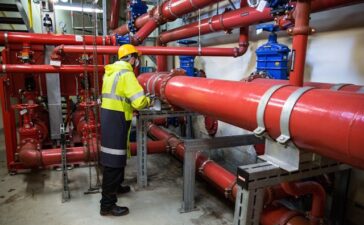Pool construction is a transformative process that turns dreams of leisurely dips and backyard retreats into tangible realities. From design concepts to excavation and the final splash-worthy finish, the journey of constructing a pool is an intricate blend of creativity, engineering, and craftsmanship. In this article, we will explore the various stages of pool construction, uncovering the intricacies that contribute to the creation of these aquatic oases.
The journey of Aquaman pools begins with the design phase, where the vision for the pool takes shape. Pool designers work closely with homeowners to understand their preferences, lifestyles, and the unique features of the space. Factors such as pool shape, size, depth, and additional features like waterfalls or built-in seating are carefully considered. This collaborative process ensures that the final design not only complements the aesthetics of the property but also aligns with the functional needs and desires of the homeowners.

Once the design is finalized, the construction team moves to the excavation stage. Excavators and heavy machinery carefully carve out the pool basin according to the design specifications. Precision is key during this phase to ensure the correct dimensions and contours. Excavation marks the first tangible step in transforming the backyard into a space destined for aquatic enjoyment.With the pool basin in place, the construction team moves on to reinforce the structure. Steel rebar is meticulously placed in a grid pattern to provide strength and stability to the pool’s shell. Once the steel framework is in position, the next step involves applying a layer of gunite or shotcrete—a mixture of cement, sand, and water. This pneumatically applied concrete creates the structural skeleton of the pool, forming a durable shell that will withstand the test of time.
The plumbing system is the circulatory system of the pool, ensuring efficient water circulation, filtration, and proper chemical distribution. Skilled plumbers install pipes, valves, and fittings, connecting them to the pool’s main circulation system. The plumbing layout is strategically designed to optimize water flow, ensuring that the pool remains clean, clear, and chemically balanced.For pools with water features, lighting, or integrated technology, the electrical phase becomes essential. Electricians install the necessary wiring for underwater lights, pool pumps, filtration systems, and any additional features such as water jets or automated controls. Safety measures, such as ground fault circuit interrupters (GFCIs), are incorporated to ensure the pool’s electrical systems adhere to safety standards.

As the structural and functional components take shape, attention turns to the aesthetic details that define the pool’s character. Pool finishes, including tiles, plaster, pebble, or aggregate surfaces, contribute to the overall look and feel of the pool. Homeowners can choose from a variety of materials and colours to achieve the desired aesthetic, whether it’s a sleek and modern finish or a natural, earthy vibe.The pool deck is more than just a functional space; it’s an integral part of the overall pool experience. Deck materials, such as concrete, pavers, or natural stone, are selected based on durability, aesthetics, and comfort. The deck’s design takes into account factors like seating areas, sunbathing spaces, and transitions between the pool and the surrounding landscape. The deck becomes a seamless extension of the pool, creating a cohesive and inviting outdoor environment.





